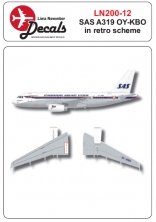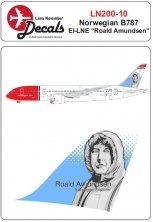
1/144 Southend Airport Size 675mm x 675mm
- Etat du stock:Disponible en 2-4 semaines
- Code produit:KWB144513
- Marque:Kits-World
Description
Kits-World - 1/144 Southend Airport Size 675mm x 675mm
Formation and early years
Southend Airport can trace its ancestry back to the Great War when it was established by the Royal Flying Corps (RFC) in 1915. It was briefly passed over to the Royal Navy Air Service (RNAS) in the same year with limited flying duties being carried out. In 1916 the airfield passed back to Rfc control when it became Rfc Rochford and used as a training centre for Rfc pilots. It also became an important base from which to launch defensive missions against German Gotha and Zeppelin raids on London. At this time, Nos. 11, 37 and 61 Squadrons Rfc were stationed there. Following the Armistice, the airfield was decommissioned and in 1919 it was passed back to arable land.
Reopening and the Second World War
In 1933, the land was purchased by the Southend On Sea Corporation and in 1935, the site was reopened and was used as a municipal airport serving London. In 1939, it was taken under Raf control and became Raf Rochford, with Supermarine Spitfires, Hawker Hurricanes and Bristol Blenheim's being stationed there, and some of the old infrastructure survives to this day, notably Pickett Hamilton retractable pillboxes, the nearby underground defence control room, an air raid shelter and the remnants of hardstandings. During the war, a number of units were based there, Nos. 37, 54, 65, 121 (Eagle), 222 (Natal), 264, 310 and 313 (Czech), 324, 350 (Belgian), 402, 403 and 411 (Canadian), 453 (Australian) and 603 Squadrons.
Post war operations
Following the Second World War, the site was renamed Southend Municipal Airport and it was re-established for civilian use, opening in January 1947 with the addition of two runways in 1955 and 1956.
It is interesting to note that Channel Airways was formed in June 1946 by Squadron Leader Reginald 'Jack' Jones as an aerial 'joy ride' operation flying a single de Havilland Puss Moth and it became East Anglian Flying Services in August the same year. This was one of the first post-war independent British airlines and initially flew from Herne Bay in Kent before moving to Southend on January 5th 1947 and commencing flying operations later in the year. In March 1947, a flying school was formed at the site.
1948 to 1949 saw the Berlin Blockade and Southend became a maintenance centre for Aviation Traders Ltd servicing six Bond Air Service Handley Page Halton transports that were based at Wunstorf Aerodrome in West Germany and used in the airlift. Following the operation, Air Traders remained at Southend and became part of the airport's maintenance and overhaul service.
in 1955, Air Charter Ltd began scheduled vehicle ferry operations on behalf of Channel Air Bridge flying from Southend to Calais Bristol 170 Superfreighters. In 1957 an deal was struck with the Belgian national carrier Sabena to operate a service between Southend and Ostend with three Superfreighters in Sabena colours, as well as a service between Southend and Rotterdam.
One of the main functions of the airport was to transport British service personnel to Malta and Cyprus using mainly Douglas DC-4 Skymasters. Following a weather event on Christmas Eve 1958 when flights were diverted from Heathrow and Gatwick to Southend due to heavy fog. Until that time, Southend had been seen as only a secondary destination point for flights that required diversion.
The sixties
In 1962, East Anglian Flying Services became Channel Air. Rival Southend-based independent airline Tradair was taken over by Channel and became a subsidiary passing it's Vickers Vikings onto the latter. Operating from Southend Channel operated flights to the Channel Islands, Ostend, Paris, and Rotterdam. It also operated a car ferry service from Bristol to Dublin, Jersey, Bilbao and Cork. In 1963, Channel began flights from Southend and Manchester with a single Vickers Viscount and Douglas DC4 that it had also acquired from Tradair. Channel began its first ventures into It charter flights flying to destinations in the Mediterranean and Ostend, and launched its famous 'Golden Jet' livery, with its fleet resplendently finished in white and silver with with golden tail fins and black trim. With the acquisition of another nine Vickers Viscount 700's acquired from Bea (seven aircraft), Starways (one aircraft) and Bahama Airways (one aircraft), eleven ex-Continental Airlines Viscount 812s and four brand new Hawker Siddeley 748s, Channel expanded its operations further to encompass more destinations.
British United Air Ferries (BUAF) was another Essex-based airline operating from Southend and Stansted, and from 1967, headquartered at Southend. Following the merger of Channel Air Bridge and Silver City Airways in 1963, Buaf is famously associated with car ferry flights and operated Bristol Superfreighters on short haul flights to the Channel Islands and northern Europe, with Aviation Traders Carvairs (a DC4 conversion by Aviation Traders) operating on longer haul routes to Switzerland (Geneva and Basle) and Strasbourg. Buaf phased its Superfreighters out in 1967 with the Carvair taking over that types duties able to carry either a combination of (up to) five cars with twenty two passengers or fifty five passengers only.
By the mid-1960s, Southend had become a major transport hub but was mainly used for freight and cargo work as at the time, it was not intended to expand the airport to receive the larger jets along the lines of Heathrow and Gatwick.
1970s-2000s
During the 1970s, cross channel car ferries and hover services from places such as Dover enabled people to cross the channel with their cars more cheaply, and as international car hire businesses were taking off people rarely needed to fly to a destination taking their car with them. As such, the Carvairs were withdrawn from servicing Southend went into a period of routine services albeit quite stable, and as passenger numbers had declined somewhat, Southend became more of a maintenance hub.
This lasted until the 1990s when Southend was sold to Regional Airports Ltd and run by that organisation as London Southend Airport. In 2008 the famous Stobart Group bought the site for just £21 million. Stobart Air injected a massive £150 million into improving, and adding to, the facilities at Southend including a railway hub, new control tower, shopping and hospitality and an enlarged terminal. in 2011, Irish airline Aer Arann began operations from Southend to Galway and Waterford, and in the same year low cost British airline EasyJet announced that it would begin flights from with services commencing in 2012 with three Airbus A319s based at Southend. Destinations included Alicante, Amsterdam, Barcelona, Belfast, Faro, Milaga, Jersey, Palma de Mallorca and Ibiza. As of the time of writing, EasyJet operates Airbus A319-100, A320-200, A320neo and A321neo, although as with most airlines the COVID-19 pandemic impacted their business.
2010 onwards
Expansion and improvement of Southend continued throughout the 2010s, with a new terminal built in 2011 and opened in 2012 for the Summer Olympic Games. Stobart Air also injected more investment into the refurbishing the original terminal building to become a lounge for executive and business customers, and the runway was also extended.
In 2014, regional airline Flybe began flights on six routes and although these were scaled back in 2015, but by 2017 Flybe had increased its flights and destinations once more to twelve European destinations and numerous weekly domestic flights to Manchester and Glasgow, along with Dublin. Air Malta began operations from Southend to Cagliari, Catania and Malta in 2018, with the former two destinations being withdrawn a year later. Flybe added Newquay to its list of domestic destinations the same year. Also in 2018, Ryanair also began flights to a number of destinations operating three of its aircraft based at Southend. In May 2019, Scottish regional airline Loganair began operations between Southend and Glasgow, Aberdeen and Stornoway, and in July of the same year, added Carlisle and Derry when those services were diverted from Stansted.
The pandemic strikes
The COVID-19 pandemic bought about a period of severe disruption and change to Southend. In 2020 Norwegian regional airline Widerøe would transfer its Kristiansand route from Stansted in the early summer, but this was delayed until October. Similarly Loganair suspended its Aberdeen and Carlisle services. Low cost Hungarian carrier Wizz Air cut Southend from two of its routes, Southend-Sibiu and Southend-Vilnius. These were followed by a further cut, Southend-Bucharest. In August 2020, EasyJet decided to suspend its operations for Southend with Ryanair following suit in October 2021. In December 2021 EasyJet announced that they would be reviewing their decision with a view to returning to Southend albeit in a limited capacity.
With the gradual easing of Covid restriction, passenger numbers are starting to rise again, so it is hoped that Southend will once again become an important hub for travel and cargo operations.
The base itself
It will be noted from the schematic diagram that there are items that will need to be added to the base. The main one is the glazed walkway which runs along the flight line. Aerial measurements are given for this, but it will be down to the modeller to research the building and how to construct it. This area can, of course, be trimmed off. The other item is a multiple point floodlight which stands at the adjacent parking are (the position is noted on the schematic). This again would have to be constructed using photographs to determine the height.












